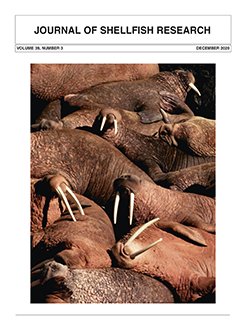Local bay scallop Argopecten irradians populations are threatened or depleted in southwest Florida estuaries (Pinellas through Lee Counties) and in the Panhandle (Bay through Escambia Counties), and community-driven restoration efforts have been ongoing for many years. To obtain juvenile scallops for use in restoration, wild larvae (spat) were allowed to settle on suitable surfaces (settlement traps) at sites known to still have high larval supply. Traps used to harvest spat were constructed with enhanced surface area relative to routine monitoring traps. Enhanced traps resulted in 142 ± 317.1 (mean ± SD) spat per trap and a maximum of 2,321 spat on a single trap, whereas the routine traps resulted in 67 ± 146.7 spat per trap and a maximum of 726. Spat were harvested each winter (2008–2012) from either St. Andrew Bay or Tampa Bay and delivered to restoration sites where citizen-scientists or collaborators measured the growth (shell heights) and mortality (live count) of 25–50 scallops within 3–25 cages each month. Most cages were hung from their own dock or the dock of a partner organization. Scientists from the lead agency also measured growth of caged scallops. Thus, simultaneous sampling occurred across a large geographical range with varied organizations and skill levels. In the shortest trials, survival remained very high, and in most years involving prolonged efforts, some of the planted scallops survived long enough to reach a size where spawning likely occurred. A maximum survival period of 559 days and the greatest mean shell height (65.18 ± 2.48 mm) of caged scallops were observed in Sarasota Bay in 2012. The observed growth in restoration cages fit previously described patterns for Florida Bay scallops, reaching maximum sizes between 60 and 70 mm shell height in 1 y. Mean daily growth rates (mm/day ± SD) increased as latitude decreased: St. Andrew Bay, 0.15 ± 0.096 y; Tampa Bay, 0.21 ± 0.124; Sarasota Bay, 0.22 ± 0.134; Charlotte Harbor, 0.28 ± 0.112; and Pine Island Sound, 0.29 ± 0.086). Temperature, scallop shell height, and the number of days in captivity (a proxy for age) generally had only minor or no effect on growth rates. When combined, the process of collecting wild spat and growing those scallops in cages using volunteer networks offers the advantages of community engagement, relatively low costs, minimal technical skill requirements, and reduced threat of loss of genetic diversity.
How to translate text using browser tools
28 December 2020
Bay Scallop Growth Rates as Measured by Citizen-Scientist Partners During Restoration Efforts in Florida
Stephen P. Geiger,
Sarah P. Stephenson,
Linda Fitzhugh,
Rene Jannemann,
Elizabeth Staugler,
Eric C. Milbrandt,
Mark Thompson
ACCESS THE FULL ARTICLE

Journal of Shellfish Research
Vol. 39 • No. 3
December 2020
Vol. 39 • No. 3
December 2020
Argopecten irradians
bay scallops
citizen-science
growth rates
restoration




